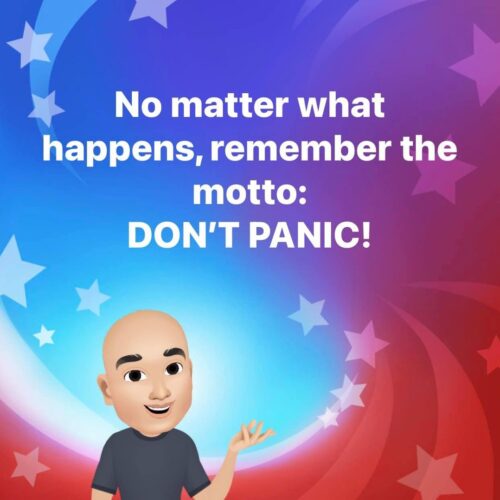April Fools: The Truth about ByoLogyc
Trevor Haldenby / Op Ed
Posted on: April 3, 2014 / Last Modified: April 3, 2014
This week, Singularity 1 on 1 played host to an exclusive interview with ByoLogyc CEO Chet Getram. The visionary leader of the world’s most successful “lifestyle biotech” firm sat down with Nikola Danaylov in a darkened medical facility, and calmly explored some of the secrets behind his company’s successful products, while screams echoed in the background, and the occasional body bag obscured the camera’s view.
If you watched the interview on April 1st, you got a glimpse into a dystopian future where the interests of capitalist innovators with our best intentions on their sleeve, but profit margins and world domination in their sights, defined the rules of a new era of biotechnological innovation. You got a glimpse into the motivations of a man and a company who promised to change the world, but as Steve Jobs mentioned during his keynote introduction of the first iPad, sometimes magical and revolutionary products come at “an unbelievable price.”

Luckily for all of us, ByoLogyc is the star biotech innovator not in the real world, but in a fictional story-world I’ve been crafting for the past three years. My name (for real, I promise) is Trevor Haldenby, and I’m a futurist and designer living in Toronto. ByoLogyc’s CEO Chet Getram is a ruthless and manipulative fictional character — a living experiment designed to explore how the language of human-centred design, sustainable business, and social innovation could be used to obscure a nefarious and short-sighted vision of profit as generated by a new biological economy. The Yes Men show up at conferences and events to deliver satirical presentations from an alternate reality… Chet Getram took Toronto’s design and innovation community by storm for nearly a year.

ByoLogyc was the star character in a new kind of entertainment and education experience called ZED.TO that my company, The Mission Business, started designing in 2010. We are a group of designers, artists, and futurists passionate about exploring the ways that people engage with ideas about the future through gameplay, live interactive engagement, and cross-platform storytelling. The interview between Nikola Danaylov and Chet Getram is but one rabbit hole into the story of ByoLogyc’s exponential rise to a position of global power, and catastrophic fall into a medical disaster unprecedented in human history — the BRX Virus, planet Earth’s first synthetic pandemic.
Over the course of 2012 and 2013, the ByoLogyc story has unfolded across a series of connected interactive theatre performances across Toronto, numerous websites and online video series, physical prototypes of the company’s products and service kiosks, social media campaigns on Twitter and Facebook, a black-tie design awards ceremony, and even a TED talk set in the year 2025.
The ByoLogyc scenario represents a whole new way of engaging mass audiences in a critical conversation about the future of an industry, a technological paradigm, and the human values that drive it. The Mission Business isn’t trying to scare people away from a biotechnological singularity; rather, we’re trying to develop social tools and processes for making sure that the right people are guiding and leading the revolution.
Rather than engaging stakeholders through written scenarios, inaccessible white papers, and policy recommendation PowerPoints, ByoLogyc’s rise and fall was designed as a warning that would surface across media platforms, and come to life all around the people engaged in it. By the time the BRX Pandemic hit full stride in November of 2012, more than 3,500 members of the public, the academic community, and the private sector had engaged with the ByoLogyc story through live-action experiences, with another 40,000 engaging online through the consumption and active creation of content that brought the dystopian scenario to life. Many of these audiences paid premium ticket prices for their participation in the beginning of the end of the world, birthing a new business model for this kind of futures work, though we also managed to make half of our live performances and most online content available free of charge.

This approach to designing scenarios about the world of tomorrow through pervasive storytelling, designed experiences, and physical artifacts is rapidly gaining popularity among practitioners of foresight and futures research. Depending on what form the finished product takes, and the philosophical stance of its creators, the practice of materializing the speculative is referred to as design fiction, tangible futures, critical design, or experiential scenarios. My colleagues at OCAD University including Stuart Candy and Jeff Watson of The Situation Lab, are leading the charge in terms of understanding this practice through design research. The thesis I wrote for my Master’s of Design in Strategic Foresight and Innovation at OCAD University, titled Bringing The Future to Life, specifically explores how the ByoLogyc scenario engaged diverse communities with the future in powerful new ways.
Creators of science fiction understand that stories about the future can play a powerful role in helping us understand the decisions we might one day have to make, and the implications we might have to live with. William Hertling’s recent post on this site makes an excellent argument for how fiction can make the future accessible, engaging, and plastic. But the kind of science fiction storytelling that 21st century audiences engage in most actively is the kind that bleeds off the page, and into the real world as well as the virtual one. Today’s science fiction blockbusters are as likely to spawn spin-off video games, television shows, comic books, and alternate reality games as they are to live exclusively on the screen, and we understood early on in the design of ByoLogyc that to engage a mass audience in the consumption and active co-creation of a scenario about the beginning of the end of the world, we would be best served to take a similar approach.
At present, The Mission Business is tackling a new audience altogether — the visionaries, entrepreneurs, and engineers who spend their days (and often nights) working at the intersection of scientific and technological advancement and social change. We believe that by creating living and breathing scenarios that spill across media and seem like another element of the real world, we can provide a tremendously useful backdrop for rehearsing crisis response, encouraging out-of-the-box thinking, and understanding the social impacts of the singularity at a personal and communal level. When we share an experience of the future that is believable enough to be real, we internalize and remember what happened in powerful new ways. Things get powerful when teams can refer to a memory of a scenario’s implications, rather than just a memo.
ByoLogyc has even found a way to come along with us on this adventurous reimagining of how scenario planning and corporate foresight might work — the fictional company sponsored a session called ByoLogyc: Shadowfall at an event last year called Autodesk IDEAS hosted at the Singularity University campus in NASA Research Park, and then revealed to guests that they had actually been summoned to act as the first contact team that would intercept an alien life form collected by an artificial intelligence managing an asteroid mining mission on the far side of Mars. It doesn’t get much more Singulatarian than that.
I hope you enjoyed the interview between Socrates and Chet Getram — and that it provokes you to explore the rest of the ByoLogyc brand on their website with a more critical eye. Sometimes the most powerful motivators for positive change in the world are stories about just how far astray amazing technological innovations can be led with the wrong people and the wrong values in charge.
Happy April Fool’s, from all of us at Singularity Weblog, The Mission Business, and ByoLogyc.
A special thank you to Nikola Danaylov, aka Socrates, who I met at the 2012 World Future Society Conference, where ByoLogyc presented and won Best in Show at the BetaLaunch competition. I think we had Nikola convinced for about 24 hours that ByoLogyc was a real company, and I’d like to thank him very much for playing along and encouraging the idea for this April Fools Day even after he found out that our singularity was all a show.
Bringing the Future to Life: Trevor Haldenby at TEDxOCADU
International Design Innovation Awards – Trevor Haldenby of ByoLogyc
About the Author:
 Trevor Haldenby is a designer and futurist who co-founded The Mission Business to create ZED.TO and Visitations, critically acclaimed and award-winning interactive entertainment experiences set in different futures. TMB now designs bespoke future scenarios for corporate clients.
Trevor Haldenby is a designer and futurist who co-founded The Mission Business to create ZED.TO and Visitations, critically acclaimed and award-winning interactive entertainment experiences set in different futures. TMB now designs bespoke future scenarios for corporate clients.
Trevor has worked as a producer at Habbo Hotel and Earth Rangers, and is a resident photographer within Canada’s most innovative institutions. Trevor is a graduate of the Canadian Film Centre’s Media Lab and OCAD University’s MDes program in Strategic Foresight and Innovation.
Related articles









